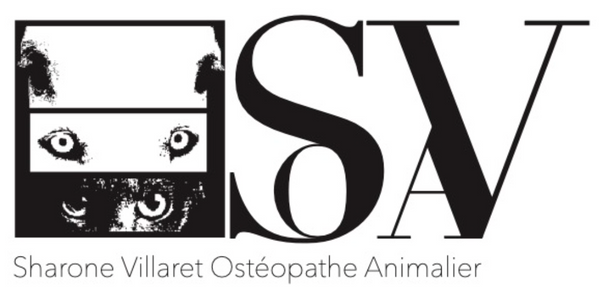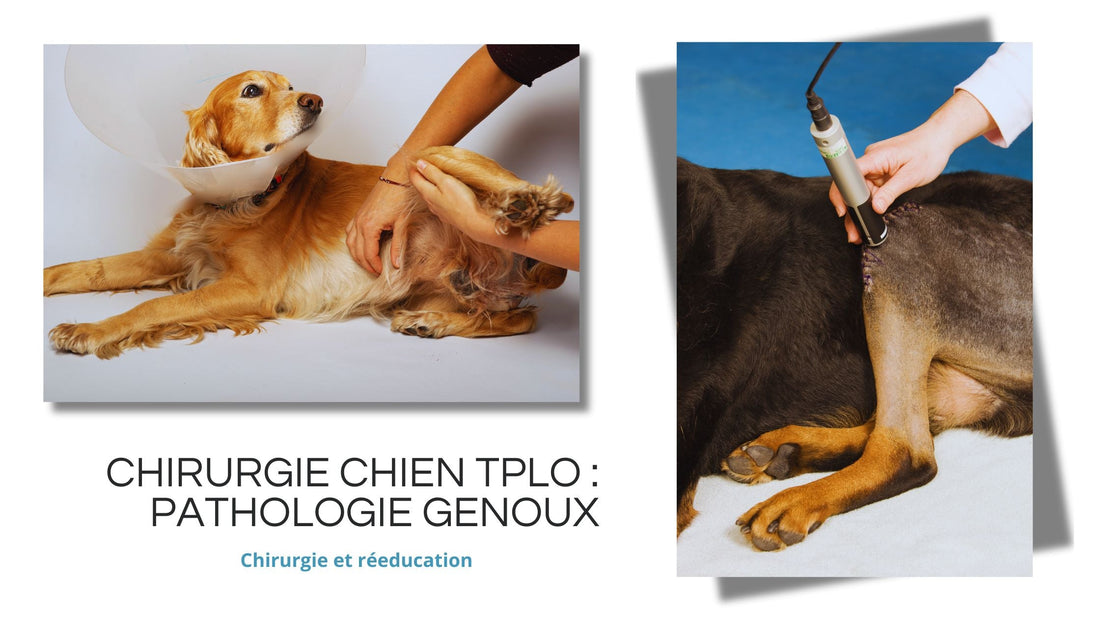Knee problems are common in dogs and can lead to pain, lameness, and loss of mobility . Cruciate ligament injuries, patellar luxation, and osteoarthritis are the main causes affecting this essential joint. When a dog suffers from knee disease, prompt treatment is essential to limit pain and maintain quality of life.
In this article, we will see:
✅ The main causes of knee problems in dogs
✅ When surgery is necessary and what TPLO involves
✅ The importance of post-operative rehabilitation and osteopathic follow-up
✅ The role of hydrotherapy and an example of a recovery protocol
1. The Most Common Knee Problems in Dogs
📌 1.1 Anterior Cruciate Ligament (ACL) Rupture
Anterior cruciate ligament (ACL) rupture is one of the most common joint injuries in dogs. It usually occurs due to:
🔹 From a sudden trauma (false movement, slip).
🔹 From progressive degeneration (wear and tear of the ligament with age).
📍 Symptoms :
✔ Sudden limping, knee pain.
✔ Difficulty putting weight on the affected leg.
✔ Swelling and instability of the joint.
💡 Left untreated, an ACL tear leads to chronic instability and promotes the early onset of osteoarthritis.
📌 1.2 Patella Dislocation
Patellar luxation (or patella luxation ) mainly affects small breeds ( Yorkshire, Chihuahua, Poodle, Bulldog ), but also some large breeds ( Labrador, German Shepherd ). It is often due to poor anatomical conformation which leads to abnormal displacement of the patella.
📍 Symptoms :
✔ Intermittent lameness (the dog alternates between a normal gait and three-legged hops).
✔ Cracking or “locking” sensation in the knee.
✔ Early osteoarthritis if left untreated.
💡 Severe dislocation may require surgery to properly reposition the kneecap.
📌 1.3 Knee Osteoarthritis (Gonarthrosis)
Osteoarthritis is a progressive deterioration of joint cartilage , often secondary to an untreated ACL tear or patella dislocation.
📍 Symptoms :
✔ Joint stiffness, especially upon waking.
✔ Chronic lameness aggravated by exertion.
✔ Pain when manipulating the knee.
💡 Osteopathic monitoring and complementary therapies (hydrotherapy, natural anti-inflammatories) can improve the dog's mobility.
2. Should a Dog with a Knee Problem Have Surgery?
📍 When is surgery necessary?
✅ If the ACL rupture causes significant instability.
✅ If the patella dislocation is severe and causes chronic pain.
✅ If the osteoarthritis is advanced and the dog no longer responds to conservative treatments.
💡 Among the surgical techniques, TPLO is the most common and effective for treating ACL tears.
3. TPLO: A Surgical Solution for Cruciate Ligament Rupture
📌 What is TPLO (Tibial Plateau Leveling Osteotomy)?
TPLO is a surgery that involves changing the angle of the tibial plateau to stabilize the knee without the need for the cruciate ligament.
📍 How the operation works :
🔹 The surgeon cuts the tibial plateau and repositions it with a plate and screws.
🔹 This changes the mechanics of the knee and compensates for the absence of the cruciate ligament.
🔹 After bone healing (6 to 8 weeks), the dog can gradually regain normal mobility.
📍 Advantages of TPLO :
✔ Better functional recovery than other techniques (extracapsular suture, TTA).
✔ Reduced risk of long-term osteoarthritis .
✔ Suitable for dogs of all sizes , especially active dogs and large breeds.
💡 The success of surgery depends largely on good post-operative rehabilitation.
4. Post-Operative Rehabilitation: Key to Recovery
📍 Why is it essential?
✅ Promotes tissue healing and reduces inflammation.
✅ Prevents muscle wasting and strengthens the joint.
✅ Improves posture and prevents painful compensations.
📍 Techniques used in rehabilitation :
✔ Osteopathy → Release of post-operative tension, optimization of mobility.
✔ Hydrotherapy → Gentle muscle work without putting stress on the joint.
✔ Physiotherapy (adapted exercises) → Progressive recovery of strength and range of motion.
5. Rehabilitation Protocol After TPLO: Example
📍 Weeks 1-2: Controlled rest phase
🔹 Reduction of sudden movements, short leash outings.
🔹 Gentle osteopathy sessions to improve circulation and release tension.
📍 Weeks 3-6: Start of active rehabilitation
🔹 Hydrotherapy in a pool or on an aquatic treadmill.
🔹 Proprioception exercises (walking on uneven ground, balance work).
📍 Weeks 6-12: Full Recovery
🔹 Gradual increase in muscle exercises.
🔹 Veterinary check-up and osteopathy sessions to correct postural compensations.
💡 Regular osteopathic monitoring helps ensure optimal recovery and prevent recurrences.
6. Conclusion: Why Combine Surgery, Rehabilitation and Osteopathy?
📌 If your dog suffers from a knee problem, appropriate care is essential:
✅ TPLO is an effective solution to stabilize the knee after an ACL tear.
✅ Progressive rehabilitation (osteopathy, hydrotherapy, physiotherapy) allows for complete recovery.
✅ Osteopathy optimizes post-operative recovery , limits secondary pain and improves the dog's mobility.
💡 By combining these approaches, your dog will be able to regain maximum comfort and mobility after knee surgery. 🐶💙
Click here to make an appointment with an osteopath for your dog in Portugal!

